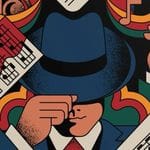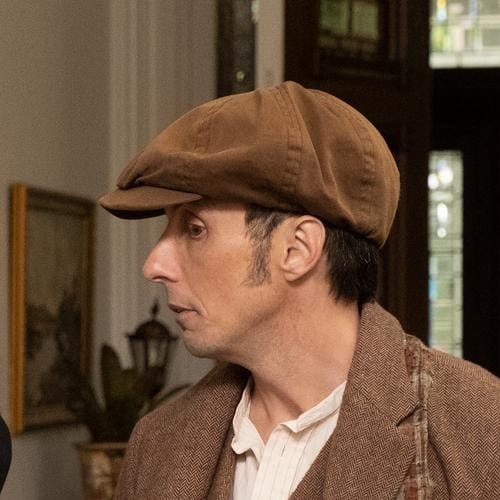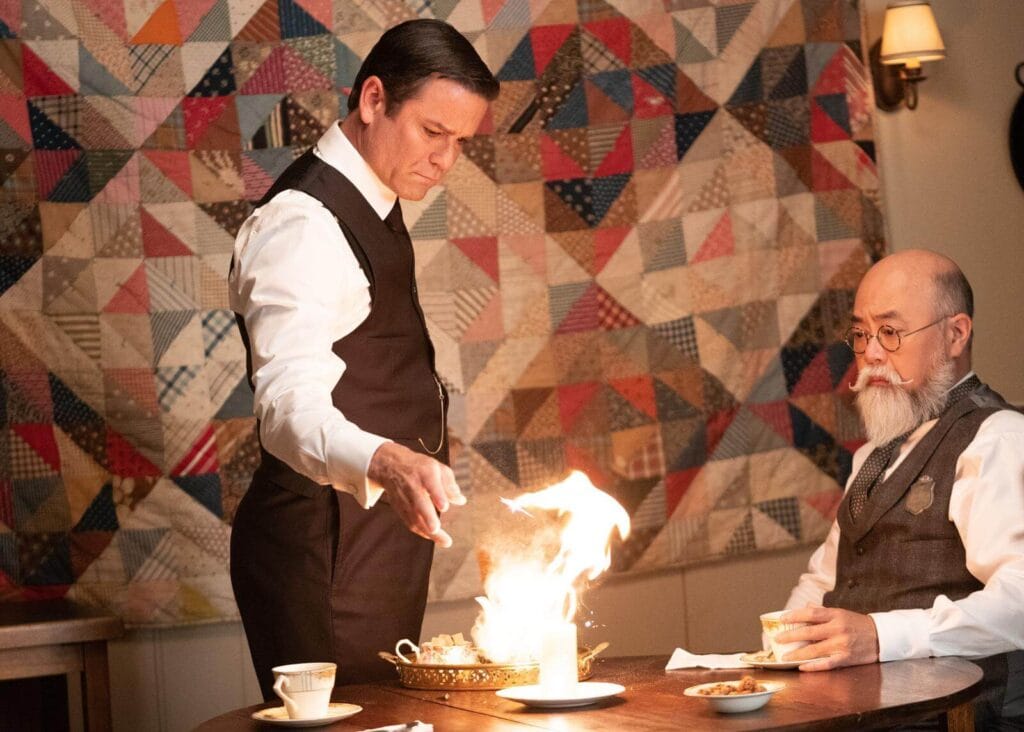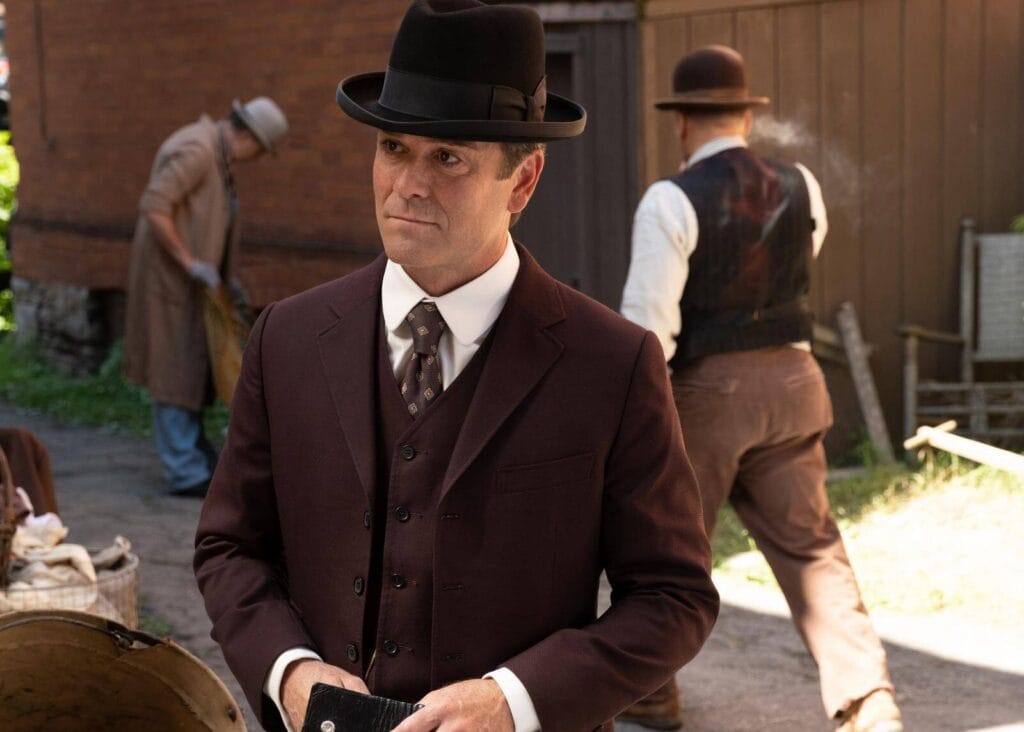S18 E3 – What the Dickens?!
Plenty to enjoy for Murdochians and Dickensians alike
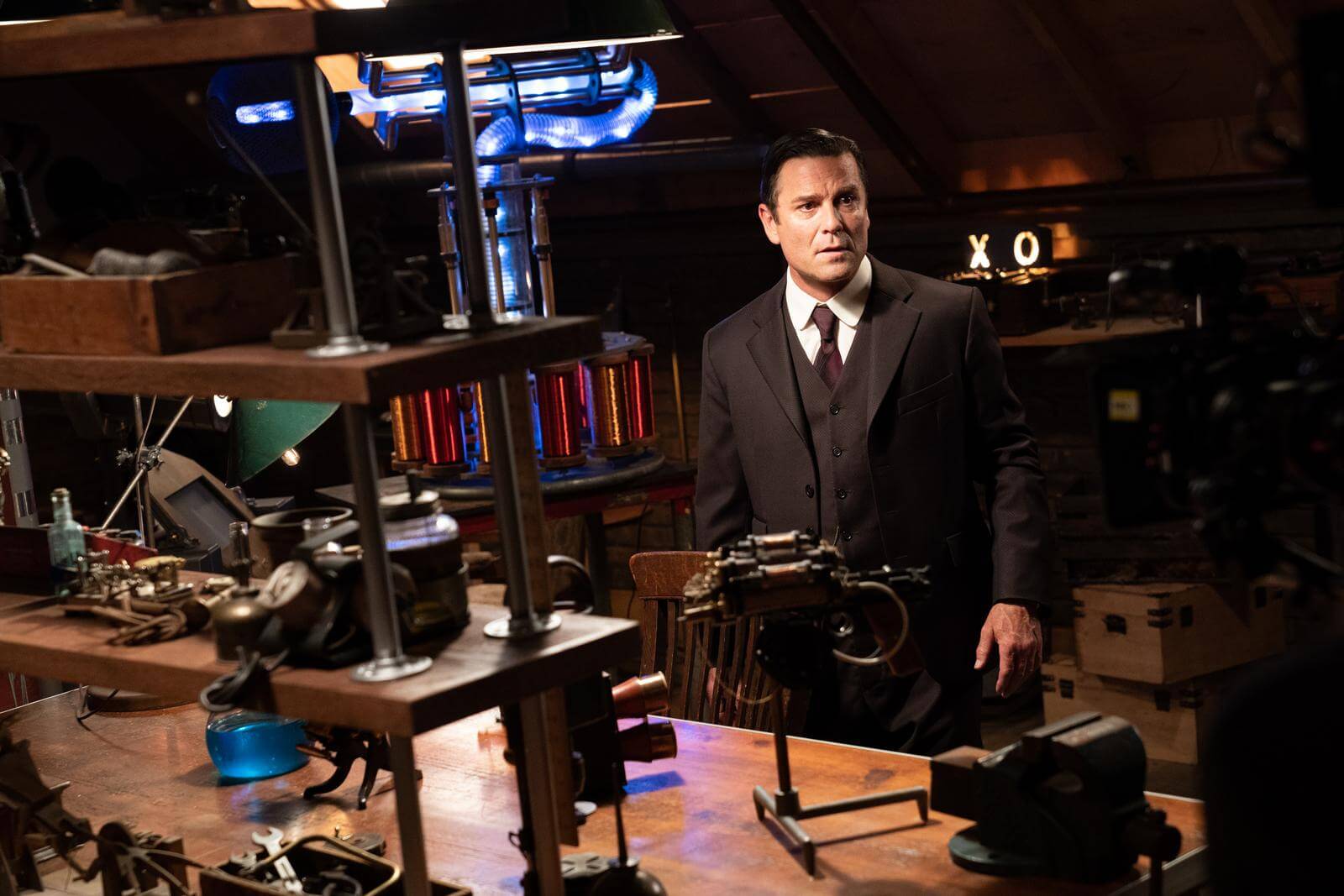
Spoiler Warning: Do not read on if you haven't watched this episode!!
Murdoch Mysteries is often categorized as a classic whodunit mystery, but I never thought that was quite correct. This time, though, it comes as close as ever, with an almost parodic Agatha Christie- or Clue-type mystery. There’s even a body in the library, killed with the candlestick! The many Dickens references may not be to everyone’s liking, but there’s plenty to enjoy for Murdochians and Dickensians alike.
Season 18 is off to a very strong start. Writer Saleema Nawaz and director Yannick Bisson deliver an engaging episode, making What the Dickens?! the third excellent episode of the season.
Easter eggs
Saleema Nawaz has obviously done her homework and has peppered the script with references to Charles Dickens’s work and life. Some of those references are to well-known pop culture elements, such as Scrooge, Tiny Tim, the ghost of Jacob Marley, Great Expectations and the like. Others are much more obscure and are likely to go over the heads of many viewers, though this doesn’t detract from the story. For Dickens lovers, there’s lots of delightful Easter eggs to be found. To name a few:
- All characters are named after places where Dickens lived or performed: Tavistock House, Gower Street, Selwood Terrace, Chester Music Hall, and Doughty Street.
- Smoking Bishop punch is mentioned in Dickens’s A Christmas Carol.
- Dickens’s study in Tavistock House had bookcases containing fake books, the witty titles of which he had invented.
Charles Dickens also did visit Canada. In 1842, he and his wife made his first North American tour and visited Niagara Falls, Toronto and Kingston. Like George Crabtree (Jonny Harris) says: All the best fiction is based somewhat in reality.
Now, none of these Easter eggs are necessary for enjoying the mystery. And if a Dickensian reference is part of the plot, we can rely on Effie Crabtree (Clare McConnell). She obviously hasn’t read much of Dickens and acts as a stand-in for the audience, who may also not know much about his work. The mystery within the mystery—Tavistock’s parlour game to find a new ending for Dickens’s unfinished novel The Mystery of Edwin Drood—is handled deftly by explaining it to Effie.
Stereotypes and tropes
In his 14th outing as a director on the show, Yannick Bisson once again takes on a genre with a prescribed format. Much like he did with the episodes Murdoch of the Living Dead (zombies), Glory Days (western), Murdoch and the Tramp (slapstick comedy), and Station House of Horror (comic book horror), he takes the stereotypes and tropes of a genre and weaves them into a format that is slightly outside the bounds of the regular Murdoch Mysteries style, yet still fits very well within the Murdoch universe. Much of the humour comes from the tropes and clichés of the genre – the remote house with all murder suspects under one roof, the detective getting everyone together at the end to explain what happened, the secret passage behind the bookcase, even the raven that flies off with the ring. But the director also gets his cast to (over)act with abandon. The guest actors portray their characters as delightfully quirky. And a very funny Clare McConnell gets to show what a great asset she has become to Murdoch Mysteries. Her rendition of Mrs. Heep from David Copperfield is hilarious. Talk about overacting!
So Many Inventions!
There’s another storyline running through the episode, although it’s not much of a mystery; rather, it serves as a vehicle to showcase Murdoch’s many inventions. Murdoch (Yannick Bisson) actually invents GPS: a Geographic Probability Sensor. It’s an improvement on the Trackizer and allows him to determine the precise location of a small sensor. Using this GPS, along with wireless communications, the circumscope, and a spike mat, Murdoch, Inspector Choi (Paul Sun-Hyung Lee), Detective Watts (Daniel Maslany), and Henry Higgins (Lachlan Murdoch) foil an attempt to steal bank deposits.
All this is done with great humour. Murdoch’s technobabble, Henry’s comic relief somehow being integral to the plot, Watts and Henry eating pie, the nods to modern technology: it’s all vintage Murdoch Mysteries and very funny.
Yet, I suspect that for most fans, the final scene is the heart of this episode. Inspector Choi introduces what can only be described as Murdoch’s happy place: A place for your amazing inventions, and for all the new ones yet to come. Murdoch’s look when seeing the invention lab (he is close to tears) is every fan’s look when watching this scene.
